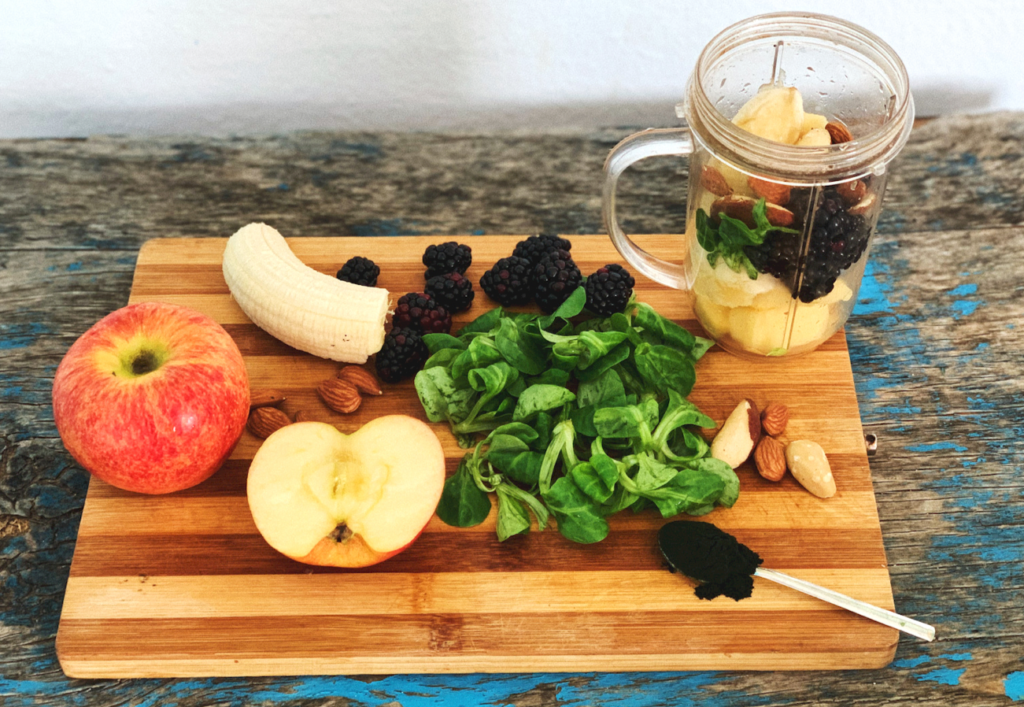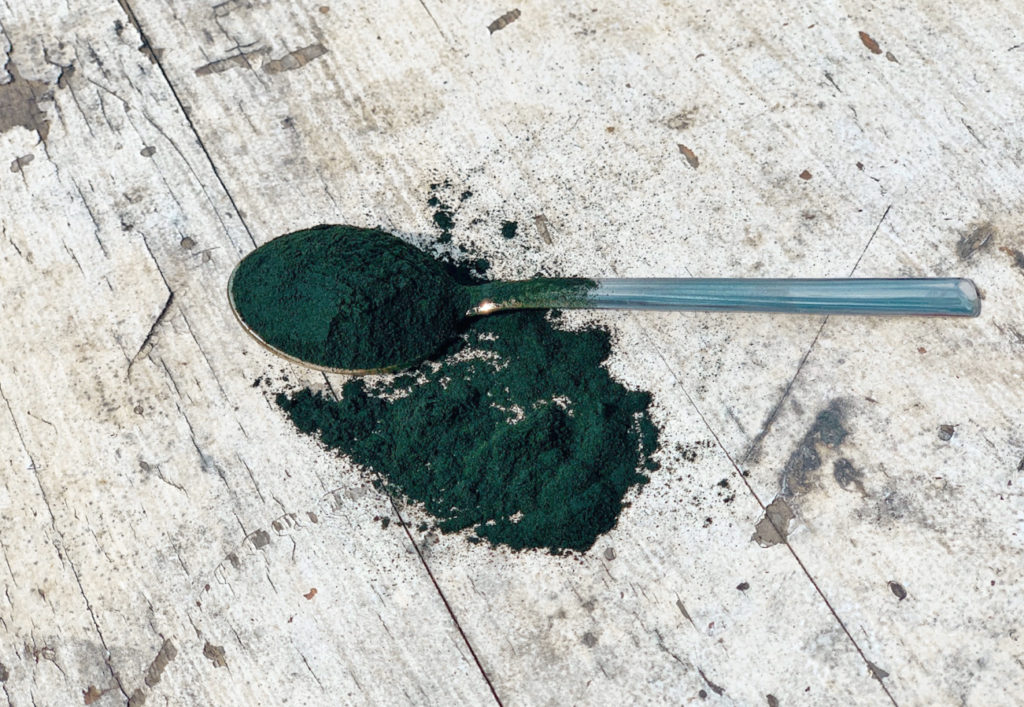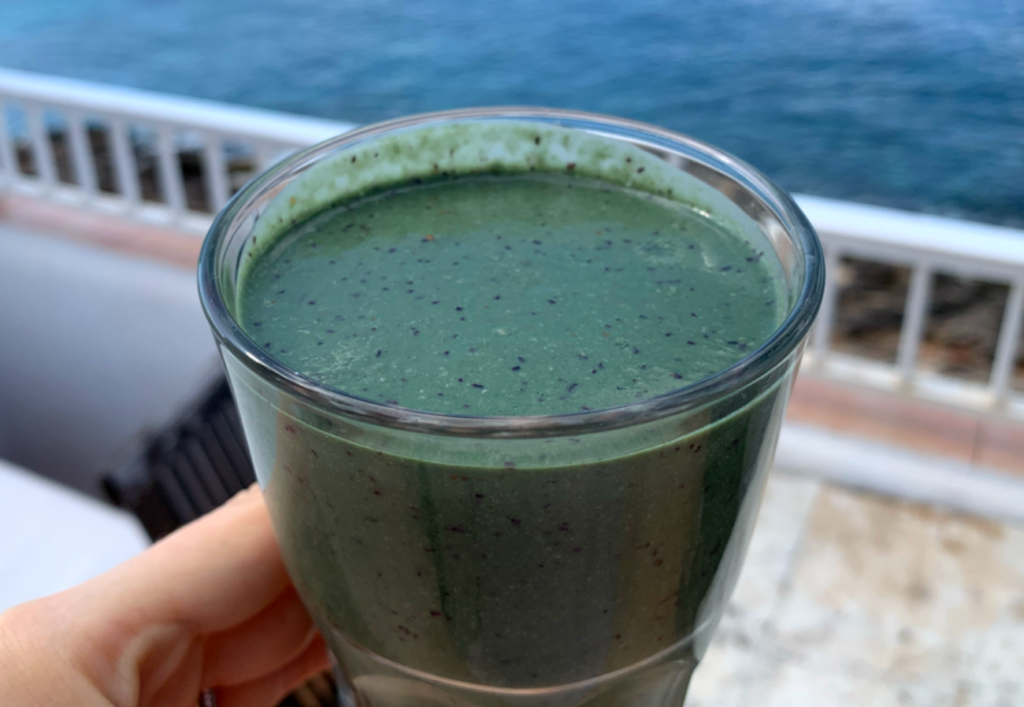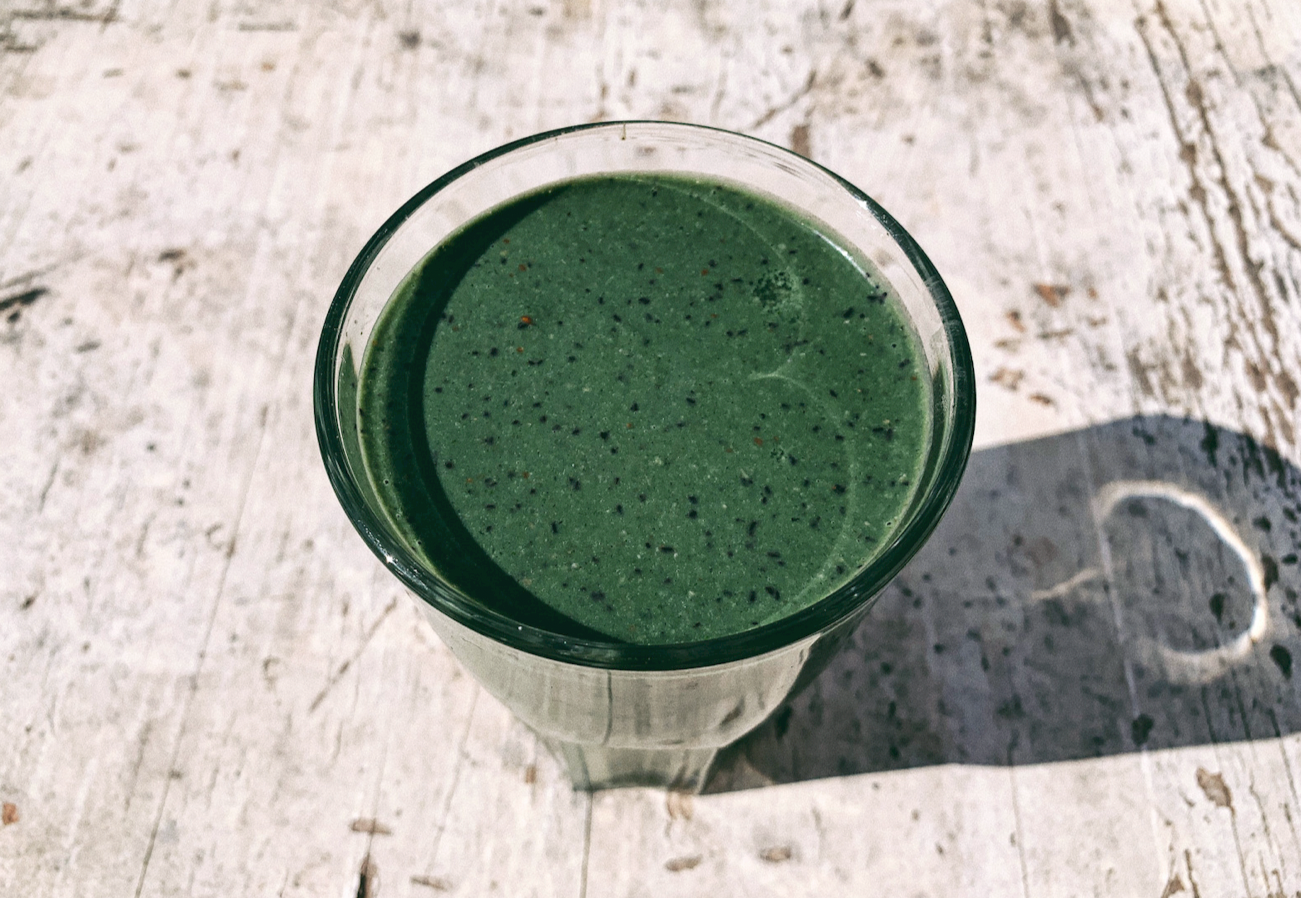Humans live a hectic lifestyle and most struggle with daily fibre and mineral intake. That’s why smoothies are the easiest way to do so, and they will also help to step up your wellness game noticeably.
If you are new to this movement and get overwhelmed by all the options and recipes available, remember that even the most common ingredients will work.
For example, our everyday smoothie recipes depend on the location and the season, of course. When we lived in Thailand, we used a lot of juicy mangoes and pineapples. In the Middle East, we had to make good use of apples and bananas. In Europe, we were lucky to enjoy a great selection of berries, creating a fantastic base for any smoothie. So the moral of this is to take what’s available and get creative.
Choose your liquid base
Firstly, you must decide on a liquid base for your smoothie. I recommend you use plant-based milk or filtered water. If you create a green smoothie, you can also use freshly squeezed orange juice. It’s an excellent base for a smoothie, only if you don’t struggle with acid reflux. Coconut water also works, as long as it doesn’t contain any added sugar and preservatives.
You don’t want to load your smoothie with artificial ingredients and unnecessary calories, so keep it simple. If you use unfrozen parts, add some ice cubes as well.
Fruit or veggie

We like to keep our smoothies simple. Depends on what ingredients you have, you can decide ether it’s going to be a tropical, green or a mixed smoothie. The most common ingredients that you can use in smoothies without making them interfere with each other are:
SWEET + SUB ACIDIC
Apples, bananas, dates, pears, grapes, peach, nectarines, berries, mango, papaya.
ACIDIC + SUB ACIDIC
Oranges, grapefruit, pineapple, berries, lemons, limes, tomatoes, kiwi, apples, mango, grapes, peach, nectarines, pears.
LEAFY GREENS + SWEET + SUB ACIDIC
Spinach, kale, parsley, lettuce, celery, banana, apples, dates, pears, grapes, mango, papaya.
LEAFY GREENS + ACIDIC +SUB ACIDIC
Spinach, kale, parsley, lettuce, celery, oranges, pineapple, berries lemons, grapes, pears.
LEAFY GREENS + VEGGIES + STARCHES
Spinach, parsley, celery, cucumber, zucchini, ginger, sweet potatoes, broccoli, beets, carrots.
ADD GOOD FATS
Avocado, durian, nuts and seeds.
As you see leafy greens, can be mixed with anything without impending digestion. Also, apples are safe to use in most smoothies, as they are by origin are both fruit and vegetable.
This whole food combining thing could be only relevant to someone struggling with the digestion of fibres. Or someone just switching to a fibre-rich diet
I easily digest any combinations. It’s all individual, so again, don’t be afraid to experiment with ingredients, flavours and textures.

To ensure you create a balanced smoothie, you will need some help from smoothie boosters aka “superfoods”. Most superfoods are easily acquired – search for them at your local supermarket or health shops.
Superfoods are packed with nutrition in small doses, so just a little will go a long way. Here’s a list of my most used smoothie boosters:
SPIRULINA – is a blue-green algae which is a powerful antioxidant and has anti-inflammatory properties.
CHLORELLA – another form of algae that contains a substantial amount of iron.
BARLEY GRASS JUICE – helps to strengthen the immune system and alkalise the body.
TURMERIC – Curcumin is the active ingredient in turmeric, which lowers inflammation and has strong antioxidant properties. To help your body to absorb it better, make sure to pair it with black pepper.
MATCHA – Green tea powder can help to boost metabolism and can be used as a fat burner.
MACA ROOT POWDER – Maca can help to increase energy and enhance your mood. It also is known to help increase fertility and libido.
ACAI BERRIES – The berries are packed with flavonoids that are a powerful antioxidant that can improve skin health.
HEMP SEEDS – Hemp is a complete protein and has a nutty taste. It is also rich in iron, magnesium and Omega-3s that are vital for our health.
CHIA SEEDS – These little seeds are a great source of Omega -3 fatty acids, fibre, Vitamin C, protein and calcium. Add them in or sprinkle on top of your smoothie or smoothie bowl.
FLAXSEED – Flaxseed can be another source of protein in your breakfast smoothie along with lignans, antioxidants and fatty acids that help to prevent fine lines and wrinkles.
PUMPKIN SEEDS – Pumpkin seeds have anti-inflammatory properties and are loaded with skin-loving vitamins, minerals and fatty acids.
GOJI BERRIES – This kind of berries are rich in Vitamin A (in the form of beta-carotene) and Vitamin C. You should be adding these babies to your daily smoothies to step up your skincare routine.
RAW CACAO – It is the most abundant magnesium source, which is vital for our skin’s and overall health. To receive all the health benefits from cacao nibs or powder, you need to make sure that it’s raw. Most of the beneficial health properties in chocolate are lost once is heated.
OATS – Oats contain B vitamins, iron, magnesium and fibre. They will make your smoothie feel fuller, which is excellent if you use your smoothies as a meal replacement.
PECANS – Most of the fat in pecans is the healthy kind, and they contain oleic acid, Vitamins A, E and B. They have a buttery flavour and can give your smoothie creamy consistency.
BRAZIL NUTS – Brazil nuts are a rich source of selenium, an essential mineral and powerful antioxidant in skin health. Add one or two Brazil nuts to your daily smoothie to get the daily recommended amount of this beauty nutrient.
WALNUTS – These are my favourite kind of nuts because they are yummy and full of Omega-3 fatty acids and Vitamin E. It can help you to regulate sleep and reduce stress hormone – cortisol.
Smoothie ratio

I don’t have a golden rule on how to make each smoothie perfectly. It all depends on the ingredients you are using, so you will have to practise your “smoothie blend ” until you get the texture satisfying your liking.
Usually, the basic ratio for fruit smoothie would be like:
Three parts of the fruit or veggie
Two parts of liquid
2-3 ice cubes
1-2 tbsp of superfoods
+ a scoop of plant-based protein powder of your choice (optional)
If you are using frozen fruit, then you would want to use three parts of fruit to three parts of liquid with no ice.
If you are doing a blended green smoothie with some fruit, keep the fruit ration slightly higher than greens to achieve a smooth consistency and good taste.
As you see, a well-structured smoothie can efficiently work as a meal replacement That’s why my family and I love to start our day with a smoothie like OMEGA 3 PROTEIN SMOOTHIE or IRON-BOOSTING GREEN PROTEIN SMOOTHIE.
If we start our day with freshly squeezed green juice or fresh papaya, we give it a little time for our stomachs to absorb all the nutrients, and then only have a smoothie as a breakfast meal.
I hope you found this useful and got inspired to create some delicious healthy smoothies to start your day. If you have any questions or anything to add, please let me know.
References:
- https://lpi.oregonstate.edu/mic/nutrient-index
- Carlsen, M.H., Halvorsen, B.L., Holte, K. et al. The total antioxidant content of more than 3100 foods, beverages, spices, herbs and supplements used worldwide. Nutr J 9, 3 (2010). https://doi.org/10.1186/1475-2891-9-3
